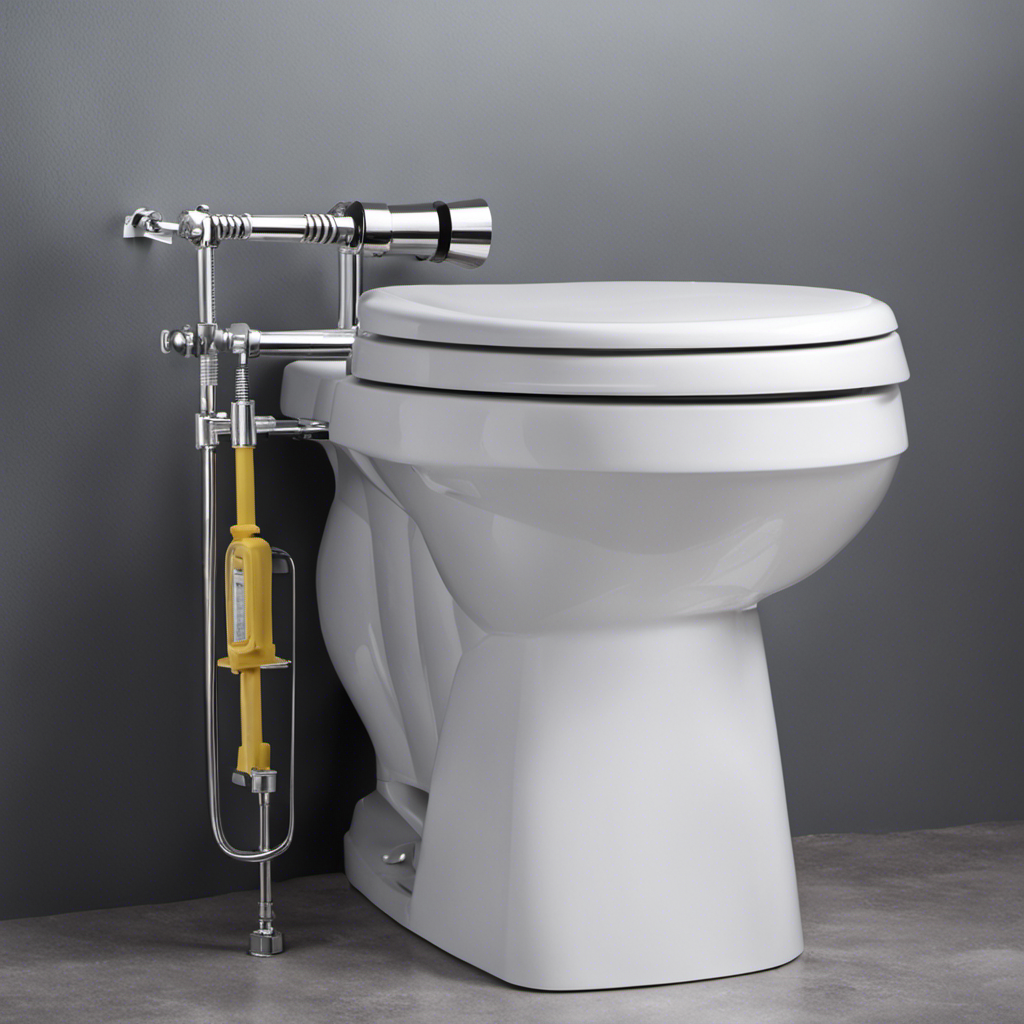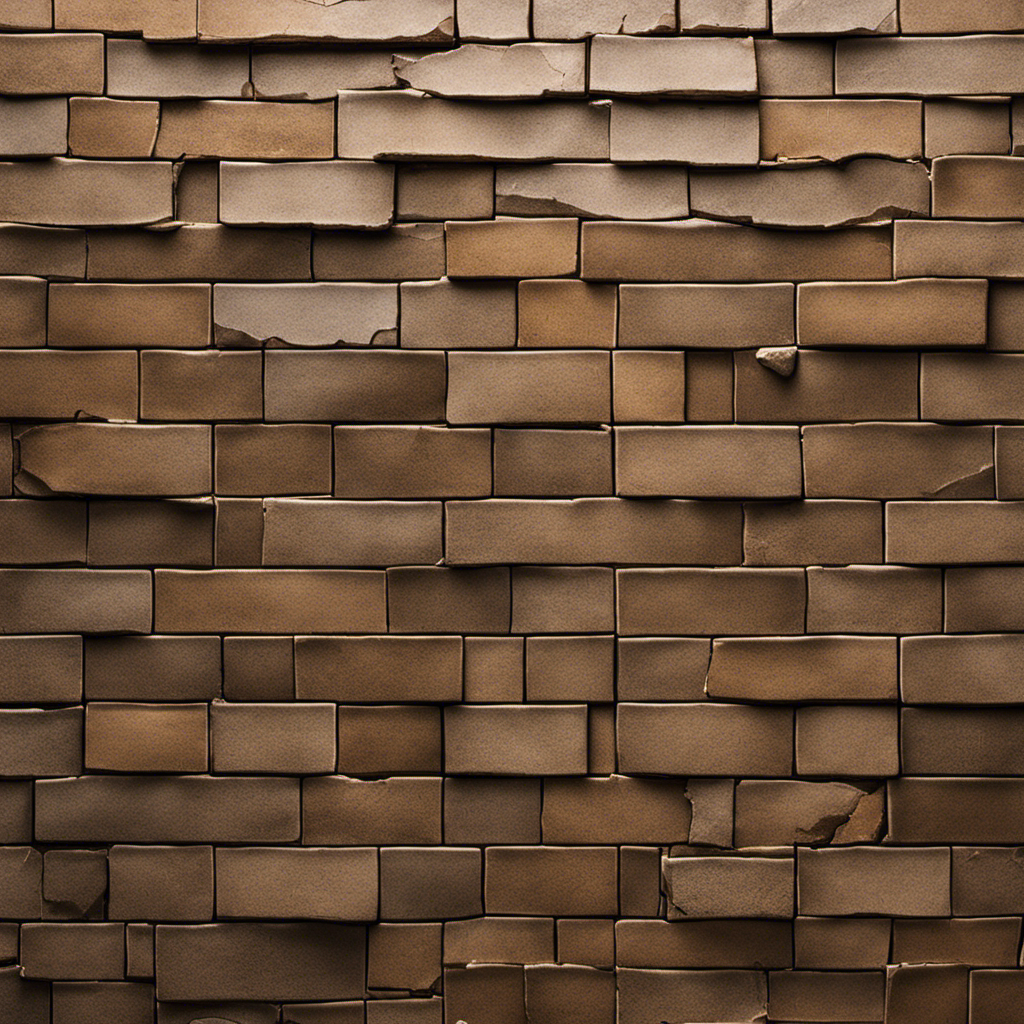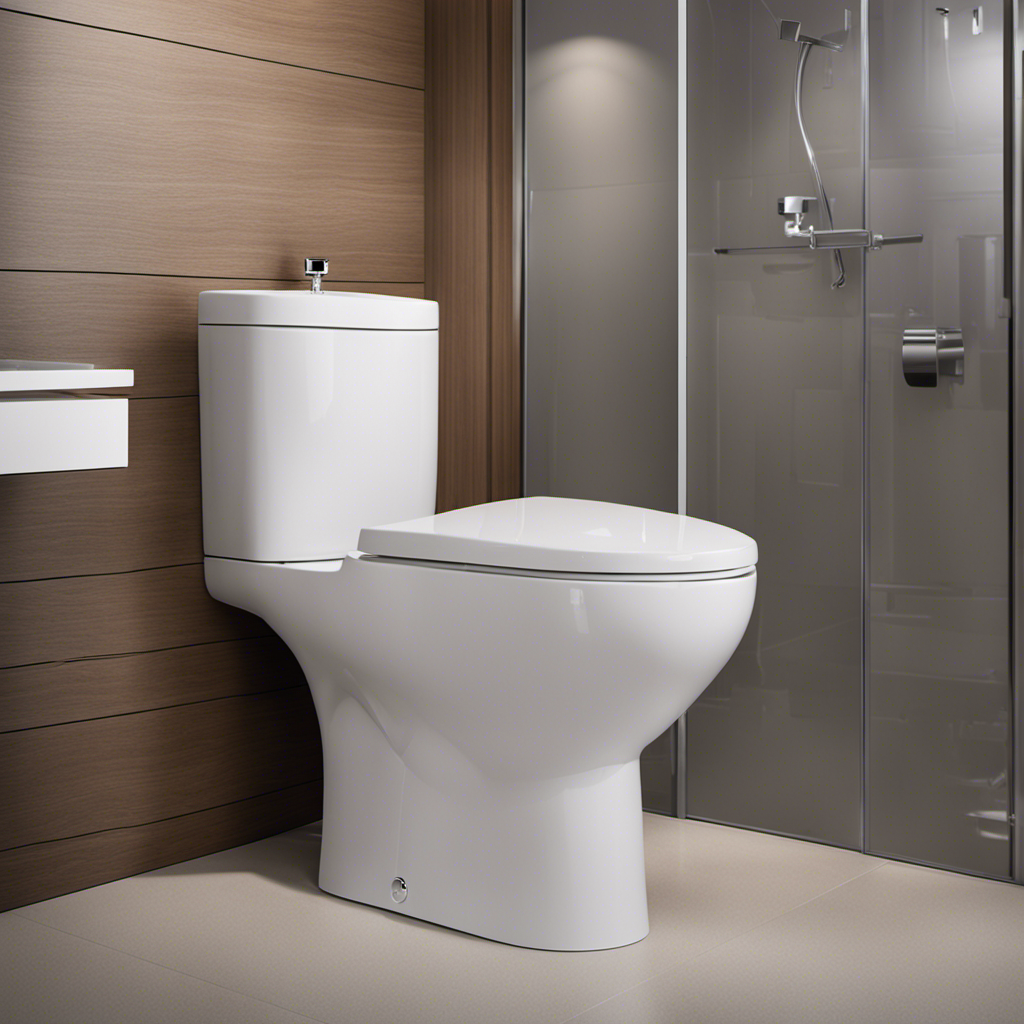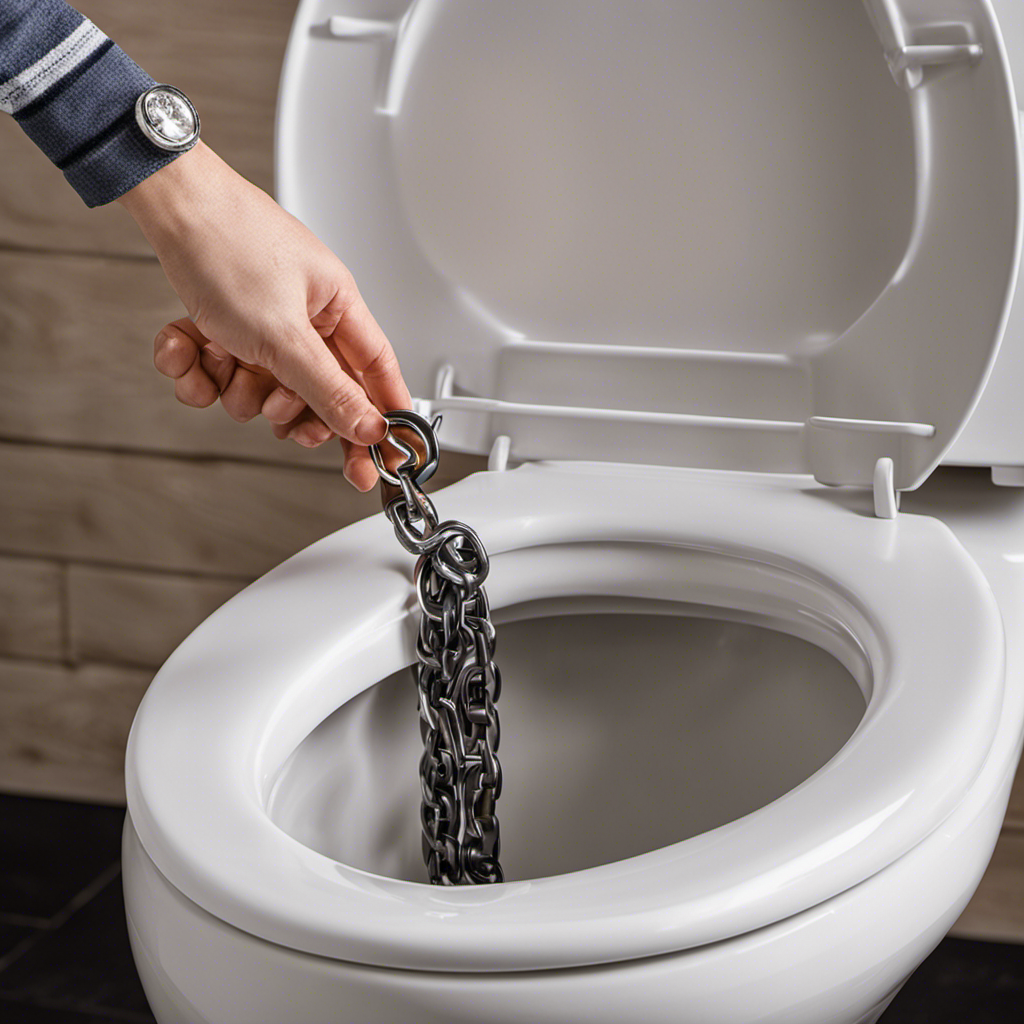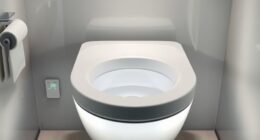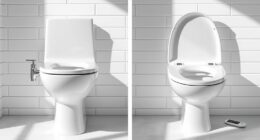When a plunger fails to do its job, the frustration of a clogged toilet can quickly escalate. Don’t panic – I’ve got you covered.
In this step-by-step guide, I’ll walk you through effective techniques to unclog your stubborn toilet. We’ll explore using a toilet auger, a homemade drain cleaner, and a plumbing snake.
And if all else fails, I’ll even show you when it’s time to call in a professional plumber.
Get ready to tackle that clog head-on!
Key Takeaways
- Excessive toilet paper, feminine hygiene products, and baby wipes can cause toilet clogs.
- To prevent future clogs, only flush toilet paper and human waste.
- Educate everyone in your household about what can and cannot be flushed.
- If a plunger doesn’t work, try using a toilet auger, a homemade drain cleaner, or a plumbing snake. If all else fails, call a professional plumber.
Understanding the Cause of the Clog
Now, you need to figure out why the toilet is clogged in the first place.
Common household items that can cause toilet clogs include excessive toilet paper, feminine hygiene products, and baby wipes. These items do not break down easily and can accumulate in the pipes, leading to a clog.
To prevent future toilet clogs, it is important to only flush toilet paper and human waste. Make sure to educate everyone in your household about what can and cannot be flushed down the toilet.
Additionally, installing a drain screen can help catch any debris before it goes down the drain. Regular maintenance, such as using a toilet auger or professional drain cleaning services, can also help prevent toilet clogs.
Using a Toilet Auger
First, try using a toilet auger if the plunger isn’t effective. Here is the proper technique for using a toilet auger:
- Insert the auger into the toilet bowl, ensuring that the rubber sleeve is covering the end of the auger.
- Rotate the handle clockwise while applying downward pressure. This will help the auger to grab onto the clog.
- Continue rotating and pushing until you feel resistance. This indicates that the auger has reached the clog.
- Slowly pull the auger back while maintaining pressure. This will help break up the clog and clear the obstruction.
Maintenance tips:
- Regularly clean your toilet to prevent buildup and reduce the chances of a clog.
- Avoid flushing non-flushable items such as wipes, feminine products, and paper towels.
- Use a plunger regularly to keep the pipes clear.
- Consider using natural drain cleaners to prevent clogs without damaging the plumbing system.
Trying a Homemade Drain Cleaner
For a more natural approach to clearing your drains, you can try making a homemade drain cleaner using ingredients you likely already have at home. This method can be effective and cost-efficient, without the need for harsh chemicals. Here is a step-by-step guide on how to make and use two common homemade drain cleaners:
-
Vinegar and Baking Soda Solution:
- Mix 1/2 cup of baking soda with 1/2 cup of vinegar in a measuring cup.
- Pour the mixture down the clogged drain.
- Let it sit for about 30 minutes.
- Flush the drain with hot water to clear the clog.
-
Hot Water and Dish Soap Mixture:
- Boil a kettle of water.
- Squirt a generous amount of dish soap into the drain.
- Slowly pour the boiling water into the drain.
- Let it sit for a few minutes, then flush with hot water.
These homemade drain cleaners can be a great alternative to commercial products and may help unclog your drains.
Using a Plumbing Snake
To clear stubborn clogs, you can try using a plumbing snake. Here is the proper technique along with some important safety precautions to keep in mind:
-
Gather your materials: You will need a plumbing snake, also known as a drain auger, which is a long, flexible metal coil with a handle. Make sure you have protective gloves and goggles.
-
Insert the snake: Insert the head of the snake into the toilet drain, pushing it in gently but firmly. Rotate the handle clockwise to move the snake deeper into the pipe.
-
Break up the clog: Once the snake reaches the clog, continue rotating the handle to break up the obstruction. You may feel resistance, but avoid using excessive force to prevent damaging the toilet.
-
Retrieve the snake: Slowly pull the snake out of the drain while continuing to rotate the handle. Dispose of any debris that comes out.
Remember to always follow proper technique and take necessary safety precautions to avoid injury or further damage to your plumbing system.
Calling a Professional Plumber
If you’re unable to resolve the clog on your own, it may be time to call a professional plumber. Hiring experts can be a wise decision when dealing with stubborn clogs that won’t budge. When considering the cost, keep in mind that professional plumbers have the necessary tools and expertise to unclog your toilet efficiently and effectively.
Here’s what you can expect when hiring a professional plumber:
- Assessment: The plumber will inspect the clog and determine the best course of action.
- Equipment: They will come equipped with specialized tools, such as drain snakes or hydro-jetting machines.
- Expertise: Professionals have the knowledge and experience to tackle even the toughest clogs.
- Timeliness: Hiring a plumber ensures prompt resolution, saving you time and frustration.
While there may be a cost involved, the peace of mind and convenience of having a professional handle the problem is often worth it.
Frequently Asked Questions
What Are Some Common Signs of a Clogged Toilet?
When a toilet gets clogged, there are several signs to look out for. Common ones include water backing up in the bowl, slow draining, and gurgling sounds. Various causes can lead to toilet clogs, such as excessive toilet paper or foreign objects.
Can I Use a Plunger to Unclog a Toilet if It Has a Major Blockage?
When a plunger doesn’t work, I’ll discuss using chemicals or calling a plumber to unclog a toilet. It’s important to explore these options when dealing with a major blockage.
Are There Any Potential Risks or Dangers Associated With Using a Toilet Auger?
There are potential risks and dangers associated with using a toilet auger. It’s important to use caution and follow proper instructions to avoid injury or damage to the toilet or plumbing system.
What Are Some Alternative Homemade Drain Cleaner Recipes That I Can Try?
When a plunger doesn’t work, there are alternative homemade drain cleaner recipes you can try. Using natural ingredients like baking soda and vinegar, you can effectively remove clogs and keep your drains flowing smoothly.
How Much Does It Typically Cost to Hire a Professional Plumber to Unclog a Toilet?
Hiring a professional plumber to unclog a toilet can be costly. However, before considering that option, it’s worth trying some DIY methods to save money and potentially solve the problem yourself.
Conclusion
In conclusion, dealing with a stubbornly clogged toilet can be a frustrating experience. However, there are several effective methods to try when a plunger doesn’t work.
From using a toilet auger to trying a homemade drain cleaner, these step-by-step solutions can help you unclog your toilet and restore peace to your bathroom.
And remember, just like a skilled plumber, with a little patience and determination, you can conquer any clog that comes your way, turning a messy situation into a triumphant victory.
So don’t let a clogged toilet get you down, tackle it head-on and show that stubborn clog who’s boss!
